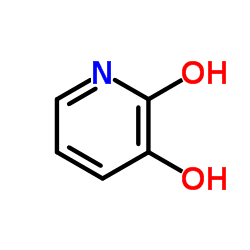2,3-Dihydroxypyridine-loaded cellulose: a new macromolecular chelator for metal enrichment prior to their determination by atomic absorption spectrometry.
Vibha Gurnani, Ajai K Singh, B Venkataramani
Index: Anal. Bioanal. Chem 377(6) , 1079-86, (2003)
Full Text: HTML
Abstract
New macromolecular chelators have been synthesized, by loading 2,3-dihydroxypyridine (DHP) on cellulose via linkers -NH-CH(2)-CH(2)-NH-SO(2)-C(6)H(4)-N=N- and -SO(2)-C(6)H(4)-N=N-, and characterized by elemental analysis, TGA, IR, and CPMAS (13)C NMR spectra. The cellulose with DHP anchored by the shorter linker had better sorption capacity (between 69.7 and 431.1 micromol g(-1)) for Co(II), Ni(II), Cu(II), Zn(II), Cd(II), Pb(II), and Fe(III)) than the other (51.9-378.1 micromol g(-1)); the former was therefore studied in detail as a solid extractant for these metal ions. The optimum pH ranges for quantitative sorption (recovery 97.6-99.8%) on this matrix were: 7.0-9.0, 6.0-9.0, 3.0-8.0, 6.0-8.0, 6.0-9.0, 6.0-7.0, and 2.0-6.0 respectively. Desorption was quantitative with 0.5 mol L(-1) HCl and 0.5 mol L(-1) HNO(3) (for Pb). Simultaneous sorption (at pH 7.0) of all metal ions other than Fe(III) was possible if their total concentration did not exceed the sorption capacity (lowest value). The recovery of seven metal ions from their mixture at pH 6.0 was nearly quantitative when the concentration level of each metal ion was 0.2 microg mL(-1). The optimum flow rate of metal ion solutions for quantitative sorption of metal onto a column packed with DHP-modified cellulose was 2-7 mL min(-1), whereas for desorption the optimum flow rate for the acid solution was 2-4 mL min(-1). The time needed to reach 50% of the total loading capacity ( t(1/2)) was <5 min for all the metal ions except Ni and Pb. The limit of detection (blank+3 s) was from 0.70 to 4.75 microg L(-1) and the limit of quantification (blank+10 s) was between 0.79 and 4.86 microg L(-1). The tolerance limits for NaCl, NaBr, NaI, NaNO(3), Na(2)SO(4), Na(3)PO(4,) humic acid, EDTA, Ca(II), and Mg(II) for sorption of all metal ions are reported. The column packed with DHP-anchored cellulose can be reused at least 20 times for enrichment of metal ions in water sample. It has been used to enrich all the metal ions in pharmaceutical and water samples before their determination by flame AAS. RSD for these determinations was between 1.1 and 6.9%.
Related Compounds
| Structure | Name/CAS No. | Molecular Formula | Articles |
|---|---|---|---|
 |
hydroxypyridone
CAS:16867-04-2 |
C5H5NO2 |
|
Identifying chelators for metalloprotein inhibitors using a ...
2011-01-27 [J. Med. Chem. 54 , 591-602, (2011)] |
|
Pyrogallol and its analogs can antagonize bacterial quorum s...
2008-03-01 [Bioorg. Med. Chem. Lett. 18 , 1567-72, (2008)] |
|
Connection of metallamacrocycles via dynamic covalent chemis...
2011-05-11 [J. Am. Chem. Soc. 133(18) , 7106-15, (2011)] |
|
A novel pathway for nicotine degradation by Aspergillus oryz...
2010-09-01 [Res. Microbiol. 161(7) , 626-33, (2010)] |
|
Effects of mimosine and 2,3-dihydroxypyridine on fiber shedd...
1999-05-01 [J. Anim. Sci. 77(5) , 1224-9, (1999)] |